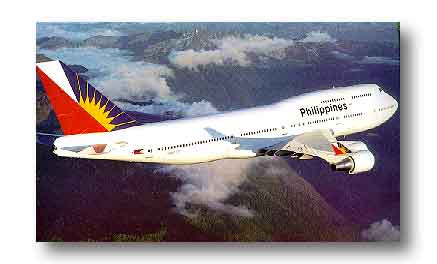
MANILA, Philippines - The Philippines is in a list of countries with unsafe civil aviation systems drawn up by the International Civil Aviation Organization (ICAO).
ICAO has listed the Philippines among countries whose civil aviation was found with “significant safety concern” (SSC), according to the Civil Aviation Authority of the Philippines-Employees Union (CAAP-EU).
Cesar Lucero, CAAP-EU vice president, said that this was not surprising in view of the CAAP’s failure to address deficiencies of the country’s airport network.
“As we have said time and again, the Philippines will continue to fail to regain Category I status with the US FAA (United States Federal Aviation Authority) and get a satisfactory rating with the ICAO until the leadership of the CAAP, especially the director-general, Ruben Ciron, is replaced,” he said.
In an electronic bulletin last Dec. 18, the ICAO listed the countries with SSC findings as Angola, Bangladesh, Cambodia, Congo, Djibouti, Guinea-Bissau, Kazakhstan, Malawi, Philippines, Rwanda, and Zambia.
“The safety oversight audit of the Philippines under the comprehensive systems approach revealed a Significant Safety Concern which remains unresolved by the State,” the ICAO said.
The SSC finding for the Philippines is a double whammy for the country’s local civil aviation industry after the US FAA downgrade of the country from a Category I to a Category II rating due to deficiencies in its civil aviation systems in December 2007.
The US FAA downgrade had caused the Arroyo government to rush passage of Republic Act 9497 which created the CAAP.
Whose to blame?Lucero said Ciron, as CAAP director-general, had mainly attended to the hiring of his fellow retired military officers to vital and highly technical positions at the CAAP even without having civil aviation experience and expertise.
“We blame Mr. Ciron and his hiring binge of his fellow retired military generals and colonels and his fellow comrades in the Reform the Armed Forces of the Philippines Movement at the expense of organic ATO personnel who have civil aviation experience and expertise,” he said.
It will be recalled that the CAAP-EU has questioned Ciron’s appointment of retired military officers with no civil aviation management expertise in the CAAP since its creation in late 2008.
The group stressed under RA 9497, the CAAP was supposed to absorb the regular employees of the Air Transportation Office to retain the experienced air traffic controllers and other crucial technical employees of the agency.
Another reason for the creation of the CAAP was to enable it to retain its more than P2 billion income raised from the collection of landing and navigation fees to raise salaries of employees such as air traffic controllers, he added.
Sought for comment, Ciron downplayed the ICAO issuance of the SSC on the Philippines.
“We are addressing that already,” he said.
Ciron said that the reason for the SSC rating by the ICAO was the finding of ICAO inspectors that CAAP lacked technical personnel.
Air safety not a one-man jobThe chief of the Civil Aviation Authority of the Philippines (CAAP) said he was not entirely to blame for the poor rating given to the country’s aviation sector by the International Civil Aviation Organization (ICAO).
Ruben Ciron, CAAP director general, was reacting to the CAAP-Employees Union’s pronouncement that he should take the blame for ICAO’s issuance of a significant safety concern or SSC rating on the country’s civil aviation network.
Ciron pointed out that ensuring aviation safety is not a one-man job and that it requires full cooperation of all CAAP personnel.
Ciron also lashed out at Cesar Lucero, vice president of the CAAP-EU, for pushing for his ouster.
“But with CAAP employees like Cesar Lucero - who, from day one, wanted me out of the job - the task of ensuring aviation safety in 80 CAAP-controlled airports all over the country has become doubly difficult,” he stressed.
He said he was not washing his hands of responsibility, but stressed that most of the problems plaguing CAAP - formerly the Air Transportation Office - were due to years of corruption and mismanagement.
“Ironically, these problems were accumulated during the time of previous ATO administrations which Lucero was part of,” Ciron said.
“I merely inherited the burden of repairing the damage when I was appointed director general after the CAAP law was passed in 2008. However, we encountered a lot of birth pains along the way, not to mention uncooperative staff like Lucero,” he said.
He also emphasized that ICAO does not give “pass” or “fail” marks but only “ratios” of compliance with certain protocols.
He said most of the “significant safety concerns” are being decisively addressed and properly communicated with concerned agencies. He said no less than Mohamed Elamiri, chief of the ICAO’s Safety and Security Audits Branch, acknowledged the corrective actions taken by the CAAP.






























